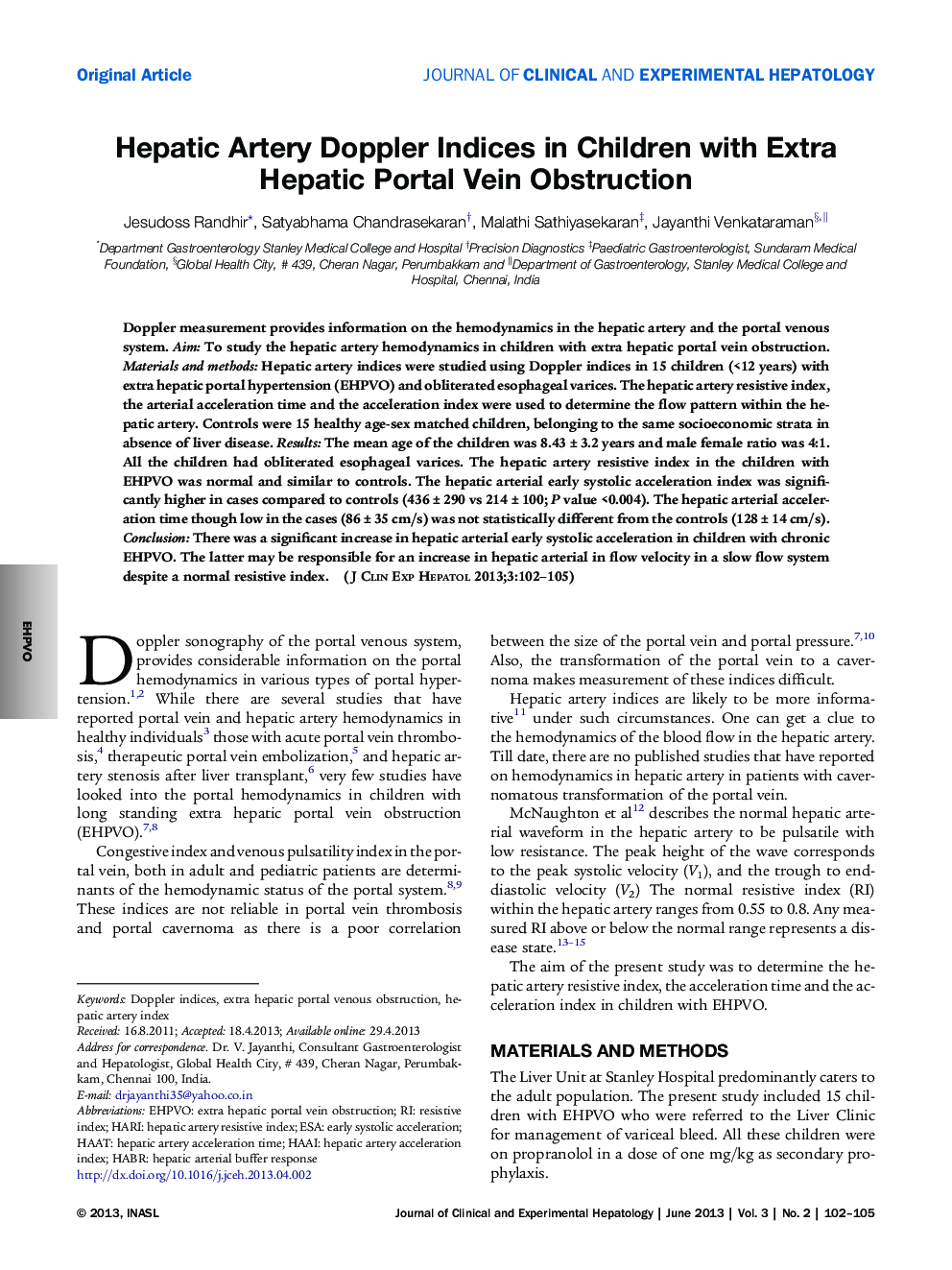| Article ID | Journal | Published Year | Pages | File Type |
|---|---|---|---|---|
| 3339434 | Journal of Clinical and Experimental Hepatology | 2013 | 4 Pages |
Doppler measurement provides information on the hemodynamics in the hepatic artery and the portal venous system.AimTo study the hepatic artery hemodynamics in children with extra hepatic portal vein obstruction.Materials and methodsHepatic artery indices were studied using Doppler indices in 15 children (<12 years) with extra hepatic portal hypertension (EHPVO) and obliterated esophageal varices. The hepatic artery resistive index, the arterial acceleration time and the acceleration index were used to determine the flow pattern within the hepatic artery. Controls were 15 healthy age-sex matched children, belonging to the same socioeconomic strata in absence of liver disease.ResultsThe mean age of the children was 8.43 ± 3.2 years and male female ratio was 4:1. All the children had obliterated esophageal varices. The hepatic artery resistive index in the children with EHPVO was normal and similar to controls. The hepatic arterial early systolic acceleration index was significantly higher in cases compared to controls (436 ± 290 vs 214 ± 100; P value <0.004). The hepatic arterial acceleration time though low in the cases (86 ± 35 cm/s) was not statistically different from the controls (128 ± 14 cm/s).ConclusionThere was a significant increase in hepatic arterial early systolic acceleration in children with chronic EHPVO. The latter may be responsible for an increase in hepatic arterial in flow velocity in a slow flow system despite a normal resistive index.
